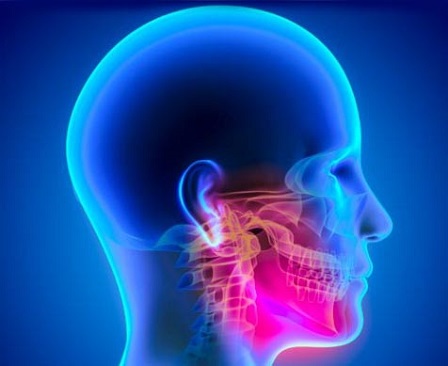Nikhil Prasad Fact checked by:Thailand Medical News Team Aug 04, 2024 1 year, 4 months, 2 weeks, 5 days, 4 hours, 59 minutes ago
COVID-19 News: The COVID-19 pandemic has brought a myriad of symptoms, both expected and unexpected. Among these, a surprising and painful issue has emerged: orofacial pain. This
COVID-19 News report delves into a recent study exploring the increase in orofacial pain among individuals infected with COVID-19, particularly during the Omicron variant surge in Fujian Province, China. The study uncovers key findings, risk factors, and the broader implications of this condition.
 COVID-19's unexpected impact - Rising orofacial pain among infected individuals
Understanding Orofacial Pain
COVID-19's unexpected impact - Rising orofacial pain among infected individuals
Understanding Orofacial Pain
Orofacial pain refers to discomfort experienced in the mouth, jaw, and face. This can include tooth sensitivity, toothache, periodontal pain, temporomandibular joint (TMJ) pain, facial pain, and oral mucosal pain. The study aimed to investigate the prevalence, characteristics, and potential risk factors of orofacial pain associated with COVID-19 from December 2022 to early 2023.
Study Overview
Researchers from Fujian Medical University conducted a cross-sectional survey involving 1,526 participants in Fujian Province. The study's goal was to understand the morbidity and characteristics of orofacial pain before and after COVID-19 infection, focusing on factors that might influence this condition.
Key Findings
The survey revealed a significant increase in orofacial pain following COVID-19 infection. Before the pandemic, 42.66% of participants reported experiencing orofacial pain. This number rose to 46.72% after infection. Notably, 14.22% of participants reported a worsening of their orofacial pain post-infection.
Gender Differences
The study found that men were more likely to experience an increase in orofacial pain after COVID-19 infection. Male participants had a higher odds ratio (OR = 1.761, P < .001) of experiencing worsened orofacial pain compared to their female counterparts.
Other Symptoms and Timing
Participants who experienced a greater number of COVID-19 symptoms (OR = 1.494, P < .001) were also more likely to report increased orofacial pain. Interestingly, the time of the first infection played a role; those infected earlier in the pandemic had lower odds (OR = 0.580, P = .004) of experiencing increased pain. Additionally, a preference for drinking tea or coffee appeared to offer some protection (OR = 0.610, P = .003) against the aggravation of orofacial pain.
Implications for Medical Treatment
The study also explored factors influencing participants' likelihood of seeking medical treatment for orofacial pain. Women, individuals with higher education and income levels, and those experiencing poor psychological status or taking more drugs for infection were more inclined to seek medical help. Concerns about COVID-19 transmission during oral treatments also played a significant role, with 58.52% of part
icipants expressing worry about aerosol transmission in dental clinics.
Psychological and Socioeconomic Factors
While psychological conditions did not show a significant direct correlation with orofacial pain in this study, the overall psychological impact of the pandemic cannot be ignored. Anxiety and depression, often exacerbated by the pandemic, are known to influence various types of pain, including orofacial pain.
Mechanisms Behind the Pain
The exact mechanisms by which COVID-19 exacerbates orofacial pain are not fully understood. However, it is known that the virus enters the body through ACE2 receptors, which are abundantly present in oral tissues. This interaction may disrupt the function of oral cells and glands, leading to painful symptoms. Additionally, the persistent nature of the virus and immune responses may contribute to ongoing pain.
Long COVID and Orofacial Pain
The concept of long COVID, where symptoms persist long after the initial infection, has been widely recognized. Orofacial pain is one of the many symptoms reported by individuals suffering from long COVID. This condition affects millions worldwide, significantly impacting quality of life and daily functioning.
Conclusion
The COVID-19 pandemic has had far-reaching effects beyond respiratory symptoms. The increase in orofacial pain among infected individuals highlights the need for broader medical attention and public health strategies. Understanding the risk factors and mechanisms behind this pain can help in developing effective treatments and preventive measures.
The study findings were published in the peer-reviewed International Dental Journal.
https://www.sciencedirect.com/science/article/pii/S0020653924001989
For the latest
COVID-19 News, keep on logging to Thailand Medical News.
Read Also:
https://www.thailandmedical.news/news/covid-19-also-causes-unilateral-parotitis-especially-in-children
https://www.thailandmedical.news/news/sars-cov-2-also-targets-the-submandibular-glands-causing-hyposalivation-and-xerostomia
